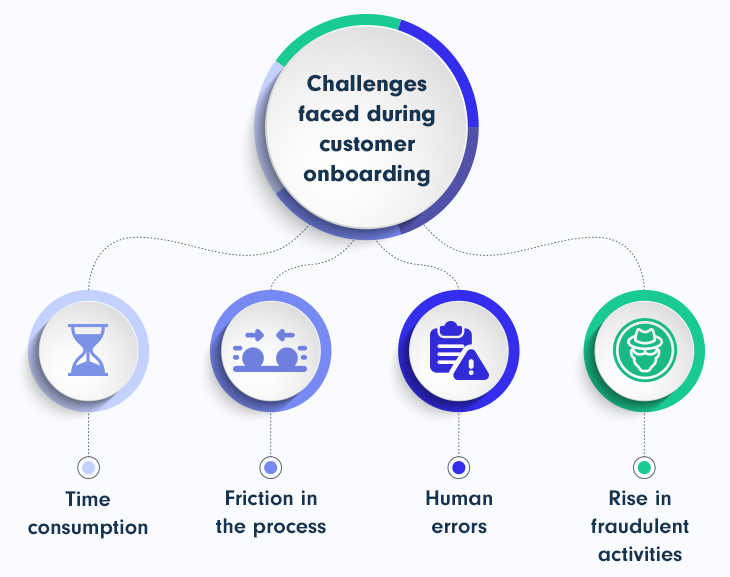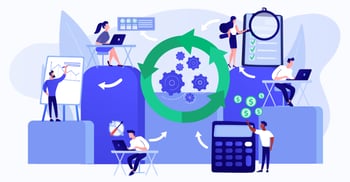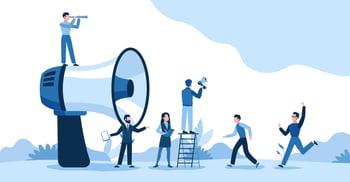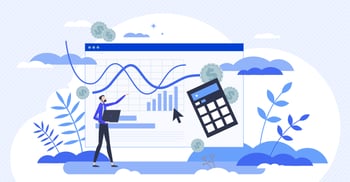SaaS User Onboarding: 15 Ways To Drive Your SaaS Business Now
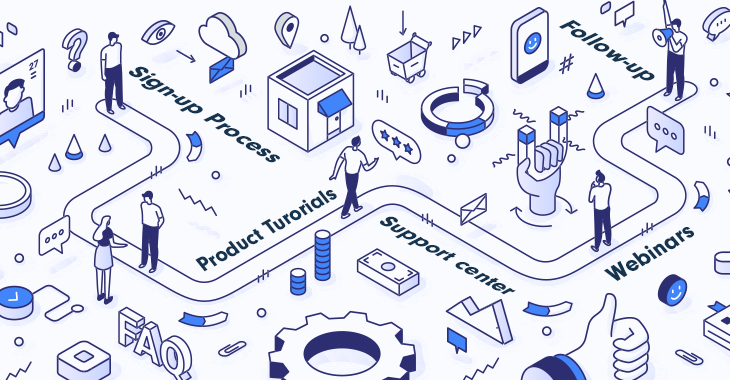
So you’ve created a great SaaS product or service, customers have signed up and you are ready and raring to go. Now’s the time to make sure their first experience is as good as your marketing and sales process has promised them.
How do you ensure a seamless user experience as customers start their journey with your business? The answer is to use an excellent customer onboarding system.
Read on to learn more about SaaS customer onboarding best practices and how to use these to sell software online effectively.
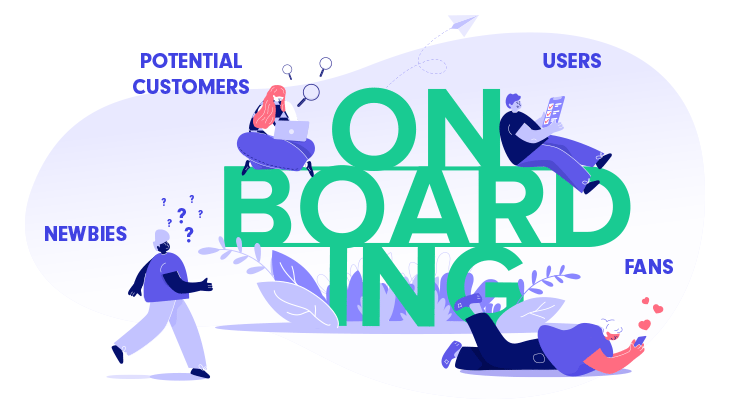
What Is SaaS User Onboarding?
User or customer onboarding refers to introducing and familiarizing customers with your products or services. A complete SaaS user onboarding will cover the entire journey your customers will take from the moment they sign up until they’re regular, paying customers.
This process includes guidance and support through elements such as videos, documentation, tutorials, and customer service. These all help to move your customers from being novices to experienced users.
However, onboarding flows must consider your new users’ goals — what they want to achieve and what success means for them. Customers care about outcomes and reaching their goals as quickly and efficiently as possible.
SaaS Customer Onboarding: An Example
Let’s use a simple example to explain the concept in greater detail: Think of the SaaS user onboarding as introducing a new habit into a person’s life.
You decide to learn a new language. To achieve this goal, you download an app and sign up for a free trial. You resolve to practice every day and persist with it for a few days. Then life takes over, and work becomes busy.
So, you focus your attention elsewhere and make excuses for why you haven’t logged back on. Eventually, you delete the app and forget about learning French.
Sound familiar? In many ways, this scenario reflects the SaaS user onboarding experience. When someone adds a SaaS product into their daily routine or workflow, they need to develop a habit of using it consistently and effectively.
Making this a habit can be challenging (remember those French lessons?), which is why it’s best to support your customer as much as possible during the first few weeks.
The Importance and Benefits of User Onboarding for SaaS Businesses
The earliest experience your user gets during their onboarding experience is vital, helping to set the tone for all future experiences and interactions. Remember, first impressions last.
According to a PWC report on customer experience, one out of three customers will stop interacting with a brand they love after just one bad experience. This doesn’t leave a lot of margin for error when it comes to customer onboarding.
Customers need to quickly learn how to use your service and understand why it will be valuable.
If they find the initial setup process easy and meaningful, you’re more likely to retain them as a customer. And since many SaaS businesses rely on monthly recurring revenue, keeping them couldn’t be more critical.
If your onboarding experience is comprehensive, you’ll experience less churn (the rate at which you lose customers) and increase your product’s lifetime value. Your first-time customers could very well become loyal, long-term users.
A good SaaS customer onboarding will also keep customers engaged. If they’re learning new things, they’ll remain interested in logging back in and using your software. And, with a bit of luck, they might even become brand advocates.
SaaS businesses often have high marketing and sales bills. If your onboarding isn’t working, you’re essentially pouring money down the drain. On the flip side, improving your onboarding process will lead to more revenue and growth.
If there’s a free trial process, successful onboarding flows are even more critical. You’re aiming for the shortest time to value and only have the duration of the trial period to impress these users.
A good SaaS onboarding will mean you’re more likely to convert trial users to paying customers.
Finally, when you effectively guide customers through a well-thought-out onboarding, you’ll need to do less customer support at a later stage. Again, this can translate into savings.
Fine-tuning your onboarding system can be inexpensive and quick to implement. And you’ll enjoy a quick return on investment. So, this is a great place to start when you’re looking to take your business to the next level.
The 8 Elements of a SaaS Onboarding Process
It goes without saying that your SaaS business will need to develop its own unique onboarding processes. However, most successful onboarding journeys will include the following elements:
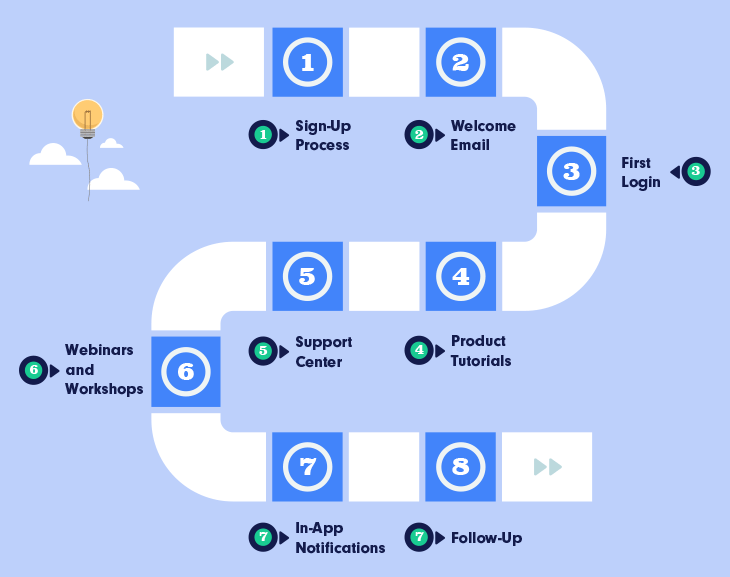
1. Sign-Up Process
This is the first step of the onboarding flow, even though your users haven’t quite signed up yet. Here you’ll collect some of their details (it’s crucial to only ask for information that’s absolutely necessary).
You can also add a further step at this stage, where you guide them through the setup process.
2. Welcome Email
This Email is a simple one that pushes potential customers further along the onboarding journey. It can welcome the user, introduce the business or product, or speak to customer pain points or desires.
The message needs to include a strong call-to-action, prompting the potential customer to continue through the process. Focus on the following action you’d like your user to take.
No 3rd party integrations. No hidden costs. No wasted time.
Just a solution as unique as your business’s needs.
3. First Login
When a user logs in for the first time, they must never be greeted by an empty user state; in other words, they shouldn’t see a screen that contains no information.
This can make them feel lost and leave them unsure of where to go or what to do next. Instead, welcome them and lead them to your self-guided product walkthrough.
4. Product Tutorials
Product tutorials are where users get to know your SaaS product and the value it offers. The product tutorial is a vital step in the onboarding experience because it’s here where new users can become loyal customers.
Make sure this is in the form of an interactive product tour. Keep things simple and only walk the users through the essential features and tools they need to get value from the product.
Consider giving the user a task that can give them practical experience in using the product. They should be able to see its value for themselves.
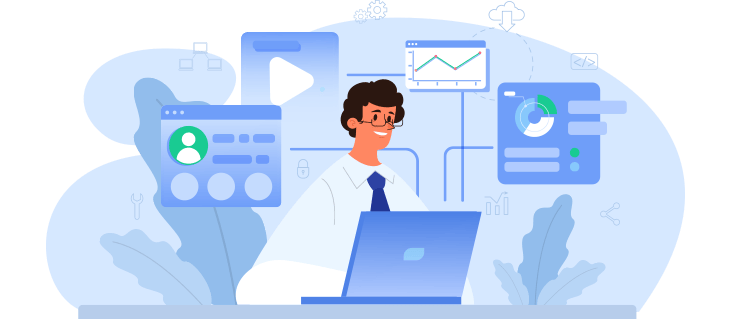
5. Support Center
Support can come in the form of a customer support center or helpdesk software. You can also create a knowledge base that users can access for information.
Here, customers will get answers to common questions about your product. The knowledge base should, at a minimum, include “Getting Started” and “Frequently Asked Questions” documents.
6. Webinars and Workshops
Webinars are great for visual learners, as some people enjoy watching experts explain different features rather than just reading about them.
They can also work to build connections and a community. This is particularly true if these online sessions are happening live. However, webinars don’t have to be live — you can pre-record them and make them available on-demand.
7. In-App Notifications
Onboarding doesn’t stop when the introductory tour ends. For example, every time you make changes or updates to your product, you’ll have to keep users up-to-date too.
A great way to do this is to use in-app notifications. You can use these notifications to introduce new and unused features, upsell and cross-sell opportunities, and help keep users engaged.
8. Follow-Up
Once a user has signed up, businesses often stop onboarding. However, it’s most effective to check in regularly with your users.
Try to get feedback from them, offer them new products, features, or services, and provide them with unique learning opportunities every so often to help them continue to achieve customer success.
15 Pro Tips for an Effective SaaS Onboarding Process

1. Speak to Users’ Desires
Customers want to know how your SaaS product can improve their lives. Use onboarding to speak to their pain points, needs, and goals.
2. Front-Load Your Product’s Value
As soon as a user signs up for your product, they’ll want to feel that it’s adding value to their lives. One way to do this is by making sure they experience a quick win early on.
This win could be helping them use the product for the first time or teaching them to try a feature of a larger product. Celebrate these quick wins with the user, and they’re more likely to want to come back and use the product again.
3. Aim For Low-Friction Onboarding
Friction in terms of onboarding refers to the effort a user exerts in the sign-up process and early stages of using a product.
This is usually determined by the number of steps, the number of fields to fill in, and how many activities a user must do to get through the process.
Low-friction onboarding means that the user can move through the initial onboarding stages as effortlessly as possible to use the product itself.
If your app already offers the value the customer is after, you don’t need a friction-based onboarding flow.
Remove all unnecessary fields and keep the process as seamless and straightforward as possible.
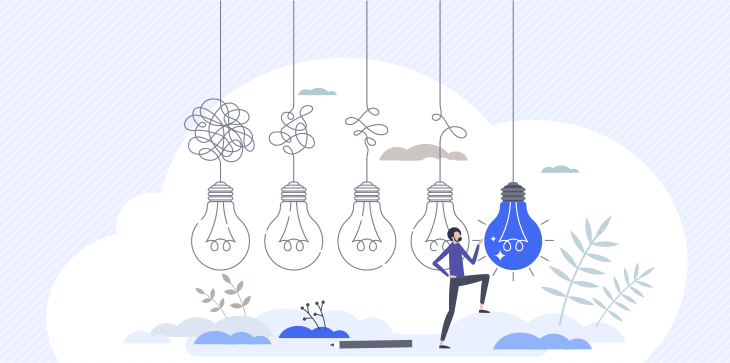
4. Use Quick, Simple, and Intuitive Processes
Speaking of keeping things simple, users can quickly become overwhelmed if they have too many choices. Too much clutter and competing elements on-screen could lead the user to skip the process or even abandon the product entirely.
One way to simplify the process is to have more stages but fewer actions or information in each step. This will prevent the user from becoming overwhelmed, distracted, or uninterested.
Customers sign up for a product to solve a problem, and therefore the focus needs to be on the core features. Tell them how these work and how they can use the features to improve their lives.
TIP: Imagine the user has zero prior knowledge of your product and how to set it up and use it.
5. Create Self-Service Onboarding
Most customers will want to go through your onboarding flow by themselves rather than waiting for a customer service consultant to take them through it. A sound onboarding system will include common questions or difficulties and be available as a resource on the onboarding pages.
6. Set Achievable Tasks
Make sure that all services, features, and steps required are broken down into manageable, achievable, bite-sized chunks. You don’t want your user to become frustrated and lose motivation.
TIP: Start with the most simple tasks that demonstrate core functionality, and build up from here to more complex information and actions.
7. Create Interactive and Task-Based Experiences
A good SaaS onboarding will be interactive. This means that you need to take into account your user’s actions and then react to those.
Don’t just walk them through the product in a one-size-fits-all way. Instead, keep in mind what the user is doing and how quickly they’re progressing.
For example, create your product walk-throughs so that your user has to take the required action before moving on to the next step. This is far more effective than a simple “next” button, which requires no engagement from the user.
This works as you can lead the user to the critical activation points and make sure they do what’s required at each point.
8. Segment Your Users
When you receive details about your users, create segments based on the information you’ve collected. These segments could, for example, be based on language preferences, product versions, geographical regions, or user personas.
They’ll make it easy for you to allocate marketing resources and make the most of sales opportunities.
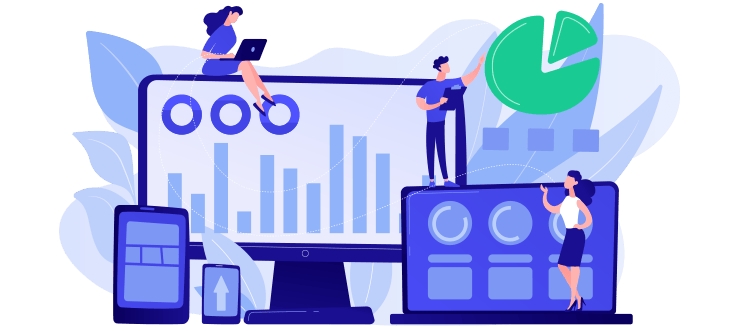
9. Create Contextual Experiences
Create contextual experiences by responding to users in terms of what they’re doing when. For example, if they’re struggling to take the next step in a writing process, point them towards a bank of social media post templates that can get them started.
10. Build Personalized, Customizable Processes
Most SaaS businesses will have multiple customer personas developed for their products.
These personas will each need a different user onboarding experience. Take your personas into account when you’re designing your onboarding. You can then find out your users’ roles, needs from the product, and goals.
If you use this information effectively, it will make the onboarding more relevant to them. It will hold more value and be more effective. Keep in mind that some users will be happy watching a short video, while others will want to read about your product, while some will skip the whole process and go straight to teaching themselves how to use it.
11. Use Progress Indicators
Progress indicators show users how far along they are in the onboarding. These indicators can be presented as percentages, progress bars, steps, checklists, or stages. Showing your users their Progress will encourage them to complete the onboarding flow.
Progress indicators speak to a human desire to set goals and reach them. As a result, your users will feel good when they complete the process or even when they complete each step or stage.
DID YOU KNOW? According to the Zeigarnik effect, people remember unfinished tasks better than completed tasks. So, showing the incomplete task may actually motivate users to finish the process.
12. Celebrate and Reward Progress
As humans, we love validation and incentivization. As users move through the SaaS onboarding flow, incorporate celebrations of Progress at different stages.
These can take many different forms. For example, banners popping up at various stages, badges, or notifications when they're close to finishing a task.
Even more powerful is an incentive or reward for moving through the entire onboarding process. These could be a month's subscription discount, a free upgrade, or a discount when the user refers the software to another potential customer.
The options are endless.
No 3rd party integrations. No hidden costs. No wasted time.
Just a solution as unique as your business’s needs.
13. Use Metrics and KPIs for Analytics
If your product is easy to use and adds value to a customer’s life, it may become indispensable to them. You can only get to this stage if you know what’s working and what isn’t, which is why metrics and KPIs are critical.
For example, you can look at completion rate, completion time, usage rate, daily active users, churn rate, and time to value to see if you’re successful.
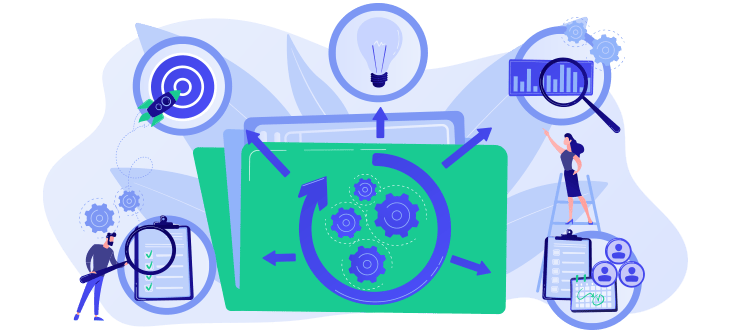
14. Keep Communication and Support Open
Users want to know that if they get stuck or have questions, they can seek help and guidance. So, make sure there is support and help links on all the relevant pages, screens, and interfaces. It can also be useful to have a customer messaging tool.
15. Welcome New Users
Imagine you walk into a physical shop and are greeted warmly by the manager, who introduces herself to you and tells you about the business. You’re more likely to feel comfortable and spend money there.
Welcoming users is a simple but effective tool for SaaS onboarding, too. It makes users feel connected to the business and begins building a strong bond between the company and the customer.
Welcome messages set the tone for the kind of relationship a customer will have with the business.
Final Thoughts on User Onboarding for SaaS Businesses
A well-thought-out SaaS customer onboarding process is a powerful weapon for SaaS businesses, and it’s a process that requires constant care and flexibility. However, implementing these 15 pro tips for SaaS onboarding best practices will successfully drive growth in your business.
Do you sell SaaS online? Need help with your SaaS product or service’s onboarding process? Get in touch with PayPro Global. We’re here to help you succeed.
FAQ
What is SaaS Customer Onboarding?
The onboarding process provides documentation and tutorials on how customers will use their software, as well as videos or other resources to help simplify and speed up the time it takes for them to recognize the benefit of your product.
What are the different types of onboarding?
(1) Introductory offers step-by-step, learn everything you need to know about the company (2) Guided provides a map for what you do next (3) Educational teaches more about the corporate culture and its values.
How can SaaS improve onboarding?
(1) Walk them through the software step by step. (2) Provide a demo video of how it works (3) Send them an email with instructions on how to get started.
Hanna Barabakh
Hanna Barabakh is a language and content specialist passionate about SaaS, technology, and e-commerce. Her expertise in multilingual content, connected to her background in Lexicography and Translation Studies, allows her to communicate complex ideas across cultures easily. She uses her knowledge to create engaging content that resonates with global audiences. In her spare time, she enjoys reading and exploring new ideas.
-
1.Explore PayPro Global's Solutions: See how our platform can help you streamline your payment processing and boost revenue.
-
2.Get a Free Consultation: Discuss your specific needs with our experts and discover how we can tailor a solution for you.
-
3.Download our Free Resources: Access valuable guides, checklists, and templates to optimize your online sales.
-
4.Become a Partner: Expand your business by offering PayPro Global's solutions to your clients.
Get the latest news
